Having eased considerably last year, fuel forecourt prices are on the rise once again.
In the space of a month average fuel prices have risen by 10-13.5%, according to AA Ireland, in no small part due to the latest phase of the Government's excise duty restoration.
But while taxes and duties play a significant role in the price of fuel in Ireland, there are many other factors at play in what we pay at the pump.
Unfortunately none of them look to be moving in the right direction at the moment.
When we’re talking about fuel, the best place to start is with oil prices, isn’t it?
Yes, you’ll often hear business journalists talking about the price of Brent Crude or West Texas Intermediate, which are two classifications of crude oil that are bought and sold on the global market.
They’re priced in dollar and sold by the barrel - and it’s essentially the raw material that our petrol and diesel is made from.
There’s a bit of a lag in the market price for oil and the forecourt price for fuel - because what’s bought today can take a few weeks, or even months, to make its way through the chain until it gets to our road side.
But, until recently at least, what happened on the market was a good indicator of what was coming down the lines.
If you look at the market price over recent years, the price of Brent Crude collapsed back in the first half of 2020, because Covid lockdowns around the world meant there was a slump in demand for fuel.
And that saw the price of petrol and diesel fell here as a result.
But you can see the lag effect at play – because Brent Crude hit its lowest point in early May of 2020 and, according to AA Ireland, petrol here fell to its lowest average price in June, when it averaged €1.21.8 per litre.
Diesel averaged €1.13.9 that month.
You can see it took a few weeks for the ultra low price of crude oil to be passed on to customers.
You said the market price was a good indicator until recently…
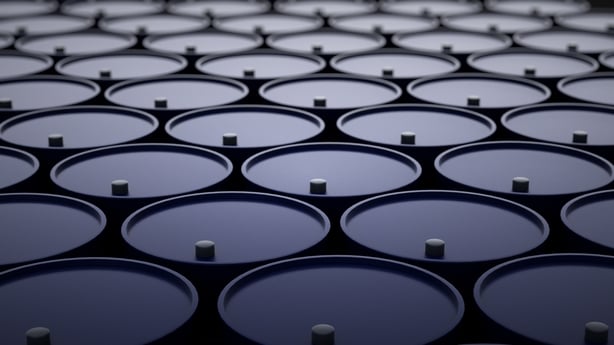
Things have changed somewhat in recent years that make the market a slightly less reliable guide of where prices are going.
The core price of crude oil obviously still does have an effect - but there are a number of steps in between the barrel on the market and the petrol pump, and the costs around those things has become less predictable.
Of course you need to ship the fuel and, from Covid all the way through to recent attacks on ships in the Red Sea, there has been a lot of disruption to global shipping lines.
That has generally made it more expensive.
A lot of this oil is coming from the Middle East, too, so when you have conflict or rising tensions in the region, as we’ve had over the past eight months with Israel in Gaza, that can impact the price.
And this is crude oil we’re talking about - it has to be refined to be turned into consumer products like petrol and diesel.
You need to use energy to do that - and, of course, since Russia’s invasion of Ukraine began, the price of energy has risen, and become more volatile in general.
But there’s another interesting factor that Russia’s invasion of Ukraine has created - because it led to sanctions and restrictions on the purchase of Russian fuel.
That seems relatively straight-forward for buyers – they simply have to stop buying from Russian companies. But it’s not that simple.
Because this is a global market, with oil moving from country to country via pipelines and containers. That makes it hard to truly know the source of the product.
Last year, for example, Europe’s imports of oil from India hit record highs. But, at the same time, India had ramped up its purchases of Russian oil.
The widespread suspicion is that European companies have been buying Russian oil, but via India rather than directly.
It’s possible they were even doing this without realising, but it would still be a breach of sanctions.
As a result, reputable companies are now having to spend more to do due diligence on where their oil is coming from.
It’s probably close to impossible to be certain - it’s not like Russian oil looks any different to oil from other countries - but from a legal, and perhaps even ethical point of view, importers will want to be able to show that they at least tried to stay within the rules.
And that adds to the import cost.
Another influence on prices are traders.
They’ve always been a part of oil markets, buying and selling on the market in an attempt to make a profit. But when there’s added volatility to the price of something, it presents more opportunities for traders, and so they end up adding to the problem.
So it’s costing more to get the petrol or diesel to Ireland – what happens next…
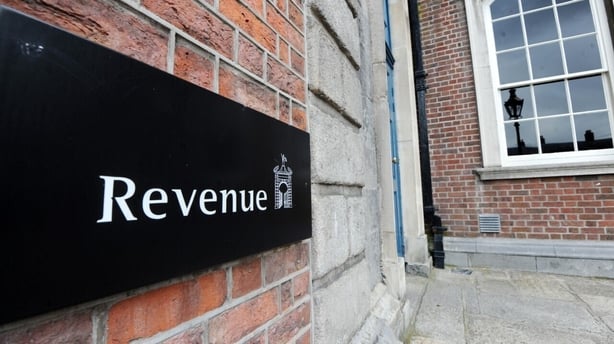
The market price is actually less than half of the story - because once it gets to Ireland it’s subject to all of the taxes, charges and duties that are applied by Government.
There are essentially five different elements at play here, which are added to the price of the fuel itself.
And, at the moment, they represent more than half of the price at the pumps.
Let’s take them one by one - starting with Excise Duty…
This is the big one - and it’s the one we’re perhaps most aware of.
It’s the one we all wait for word on in the Budget, and then people rush out to fill their tanks before midnight in order to save a few cent.
But, at the moment, excise duty is 50.93 cent per litre of petrol, and 40.13c per litre of diesel.
When you consider that the actual litre of petrol, at the moment, might be costing you somewhere around 80-85c per litre - diesel maybe 85-90c - you can see how significant an addition it is on the price of a litre.
Then we have the Carbon Tax…
Yes, this is based on the amount of carbon emitted rather than being charged on a per litre basis like excise duty.
It’s currently charged at €56 per tonne of Co2, but the carbon emitted by petrol and diesel doesn’t change, so you can work it out on a per litre basis from that.
And it’s currently just shy of 13c per litre of petrol - and 15c on diesel.
The money raised from that is largely meant to go to environmental and sustainable measures - like helping homes and businesses to decarbonise, helping farmers to become more sustainable and so on.
Then we have the NORA levy… what’s that?
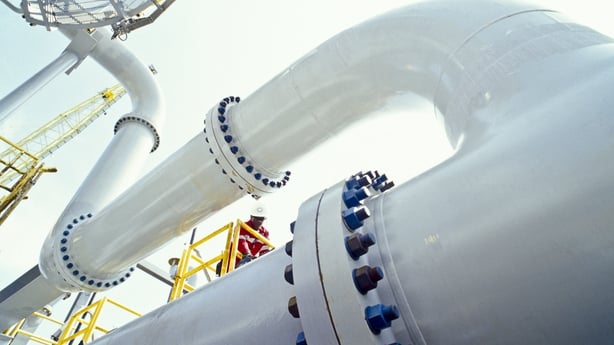
That’s the National Oil Reserves Agency.
Because, under EU law, every member state must keep a stock of oil or petrol - either 90 days worth of imports, or the equivalent of 61 days of consumption… which ever is higher.
The NORA is the statutory body in charge of that and, in order to pay for the purchase an maintenance of those stocks, it adds 1.9c per litre to the price of diesel and petrol.
Then we have the Better Energy Charge…
Yes - this is a strange one - because it isn’t quite a Government levy, but it’s a consequence of a Government requirement.
There are energy efficiency obligations on the fuel industry here - so every year they need to undertake certain measures to ensure they’re met.
To pay for that, the add 0.8c per litre to the price of diesel or petrol, under the Better Energy Charge.
So it’s kind of like the carbon tax, but a bit more focused and industry specific.
And then we have VAT…
Yes - and it’s important we mention this last, because for all of the figures that I mention for the different levies and duties, VAT of 23% is then added on top of that.
It means that, even if the actual petrol or diesel was free, you’d currently be paying about 82c per litre of petrol, and just over 71c per litre for diesel.
But, of course, the fuel does cost money - and VAT is added to that too.
Fuels for Ireland, which represents fuel forecourt operators and oil importers, calculates that duties, taxes and charges add 55% to the price of a litre of petrol - and just over 50% to the price of a litre of diesel.
And presumedly the forecourt operator wants to make a profit too…
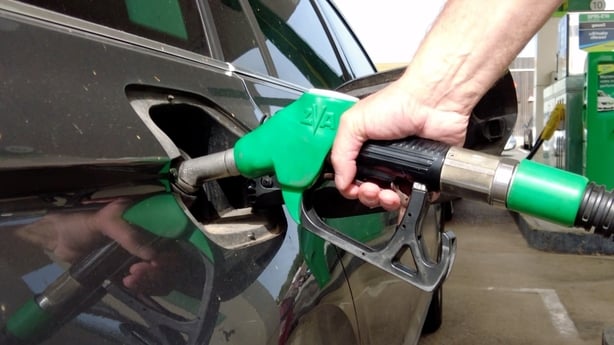
Well yes – though Fuels for Ireland says the margin on fuel is extremely small for most operators.
It will differ from place to place, but that could be 0.5c per litre in an urban location where there is greater consumer choice.
It may be higher in rural areas where an operator has no competitor for miles, though in border counties some operators say they are currently selling fuel at a loss in order to compete with Northern Irish rivals.
Instead, operators say the fuel is a way to draw in consumers who, they hope, will then buy items with a higher margin.
The self-service coffee machine is a good example of that – that can have a margin of anywhere from 40-70% on a cup of coffee.
The difference is so stark, that a customer buying a cappuccino likely represents more profit to a fuel forecourt operator than someone spending €100 on diesel.
Is there any hope that fuel prices will fall again soon?
It’s impossible to say anything with certainty… but the signs are far more likely that fuel prices will rise in the coming months, rather than fall.
In terms of the elements that the Government here has influence over - as things stand, excise duty is set to rise again on the 1st of August, by 6.5c on petrol and just under 5c on diesel.
That’s the final part of the gradual restoration of fuel excise duties, which were of course cut in the wake of Russia’s invasion of Ukraine.
There are calls from a number of quarters for Government to postpone or even abandon that increase altogether, given the current high price of fuel and the ongoing cost of living pressures being faced by consumers and businesses.
Some in the industry do expect the August increase won’t be made – but that’s unlikely to be decided by Government until some time in July.
But, even if that’s deferred, we will almost certainly see another increase in the Carbon Tax in Budget 2025 in October.
The legislation currently allows for a gradual increase in this tax each year, until it gets to €100 per tonne of Co2.
It’s set to increase by around €7.50 in the next Budget - which would be a roughly 13.4% increase on its current price.
If you take that percentage increase and add it to the current carbon tax per litre, you’re looking at an increase of about 1.73c for petrol, and 2c for diesel.
And, of course, you have VAT of 23% added to that - so that makes it roughly 2.1c, and 2.5c extra respectively.
The NORA rate is set to stay the same - but the Better Energy Charge is expected to go up slightly - from 0.8C to 1.3c per litre.
And there’s also going to be a growing obligation on fuel companies to increase the amount biofuels they sell - and Fuels for Ireland currently estimates that will add about 2c to the price of a litre of fuel.
What about the market price?
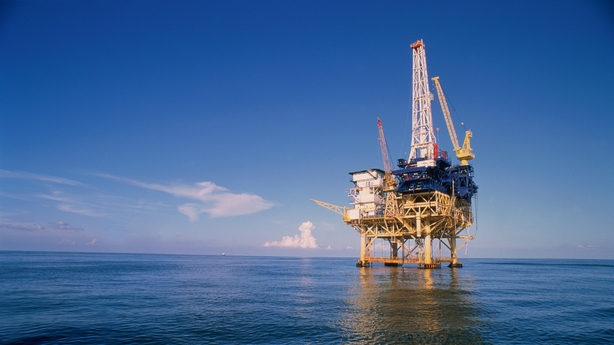
That’s probably even harder to predict than Budget 2025 - but the market price of fuel has been relatively stable in recent months.
It’s fallen well back from the peaks it hit after Russia’s invasion of Ukraine - but sadly is well above the levels we would have seen even pre-Covid, in 2018 and 2019.
However even if the price does fall, we may not even see the benefits of that in Ireland.
Crude oil is priced in dollar, and the euro has broadly been losing ground to the dollar over the past three to five years… making things bought in dollar more expensive for us.
If, as expected, The European Central Bank cuts interest rates in June and the US Federal Reserve doesn’t, it’s likely to make the euro even weaker against the dollar than it is now.
But even putting all of that aside, it’s unlikely we’ll see a price fall because oil is a particularly irrational market - it doesn’t adhere to the same supply and demand that you’d expect.
Why not?
This is in large part down to the oil production cartel OPEC - which has 12 members including Saudi Arabia, Iraq, Iran and the United Arab Emirates.
Its membership controls around 80% of the world’s proven oil reserves, and about 40% of current global production.
And that level of control is even higher if you count the OPEC+ members - which includes Russia, Azerbaijan, Bahrain and Brazil.
They’re kind of associate countries that aren’t officially in OPEC, but which still tend to adhere to decisions around supply levels.
And that’s the important thing here - because OPEC will meet every two months, look at the market conditions, and agree on how much oil each country will produce each day.
And it’s not the case that they will look purely at how much oil they think will be bought - and produce that amount - they will use that production level as a tool to control the price.
In the wake of Covid, they cut production dramatically in an attempt to push the price back up… and they kept doing that until it returned to a more acceptable level.
But they’ve also gone the other way - for example when the shale gas market boomed in the US, OPEC decided to boost production and push down the price.
That was because shale is more expensive to make, and they hoped if they put up with lower profits for a while, they’d put the US upstarts out of business, and maintain their level of market control.
At the moment, though, OPEC is continuing to keep a lid on production in order to support 'price stability’… and back in March OPEC+ members agreed to cut production through to June.
So they’re clearly happy to see the price where it is, or even higher.
In other words, bar any major shock, we’re unlikely to see any dramatic fall in oil markets in the near future.
The only mitigating factor is that OPEC countries do have to manage a balancing act - because they obviously want to make as much money as they can, but if they push prices too high, it will accelerate people’s move away from fossil fuels.
The most recent SEAI fuel price comparison suggested that, in the first three months of the year, electric cars cost about a third the price of petrol or diesel to power per 100 kilometres.
The price of petrol and diesel has gone up since then, while electricity prices have fallen. If that trend continues, it will further incentivise people to get an electric car.
But realistically, even if the market price of oil doubled and we all decided we wanted to go electric, that would take time to become a reality.
Few people are in the financial position to immediately change car. We also know the infrastructure isn’t there, not just in Ireland but other countries too. In addition, manufacturers aren’t making enough cars to meet a substantial increase in short-term demand.
So while it may be a slow train coming down the tracks, the likes of Saudi Arabia aren’t worried just yet about driving customers in Europe and the US to go electric.








